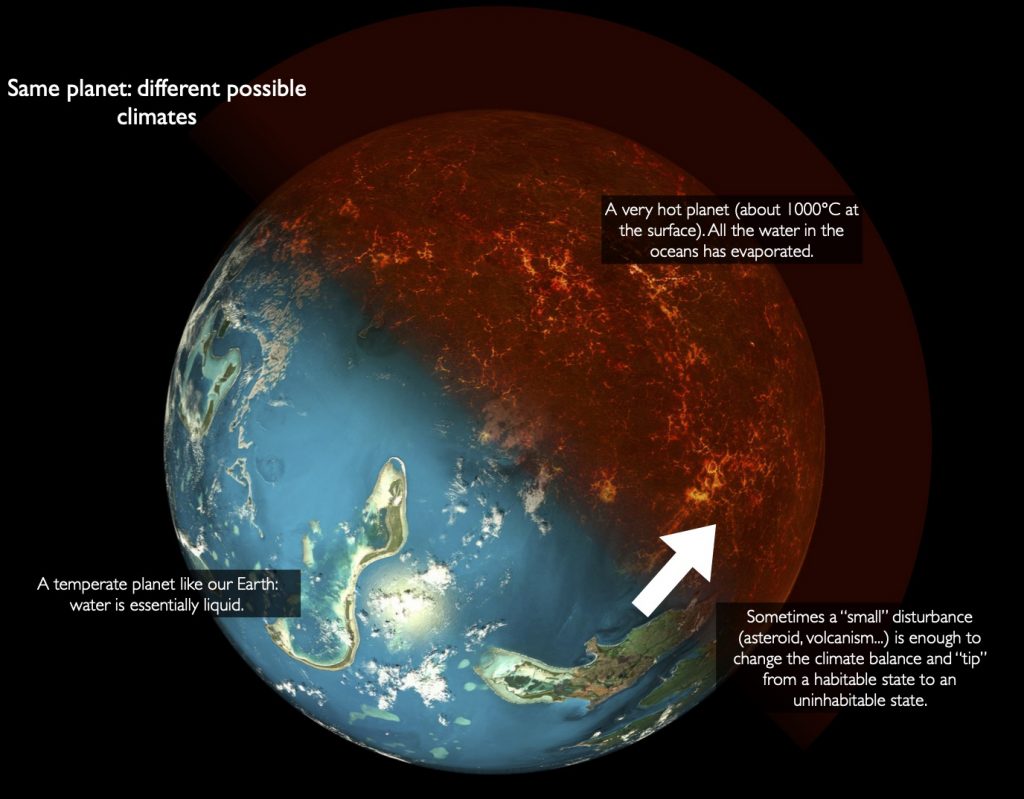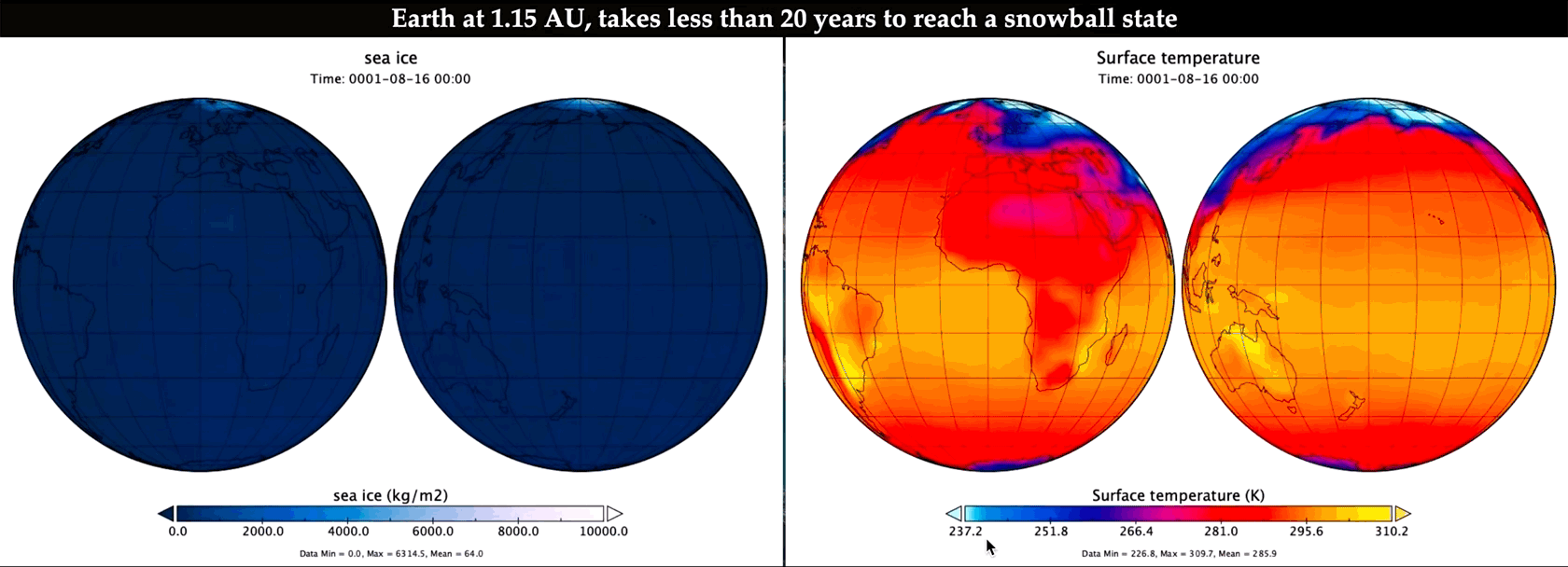C.1: Climate of habitable planets
Scientists have been studying planets around low-mass stars, such as Proxima-b and the Trappist-1 system, which are easier to detect than Earth-like planets around sun-like stars. These systems are thought to be numerous and many could host temperate rocky planets with surface liquid water, making them interesting for studying climate and potential habitability. However, these planets are found on close-in orbits, which means they are subject to star-planet interactions that can impact their climate and habitability. These interactions depend on factors such as the planet’s mass, radius, internal structure, and atmospheric properties, and can change as the system ages. Understanding how these factors affect climate and habitability is important for studying exoplanets.
We are using climate models to explore the diversity of planetary atmospheres and climates through time, as well as investigating the multi-stability of climates. This means that even if two planets are identical in all measures except for slightly different initial conditions, such as ocean temperature, they can have very different equilibria states (See illustration).
This project aims to prepare for the upcoming opportunities to study exoplanets by generating observables and investigating how the orbit and rotation of close-in planets evolve with the age of the system. A multidisciplinary approach will be used to calculate more realistic evolutions.
Project Summary
Project C1 is an interdisciplinary effort between astronomers and climate scientists to study the habitability of exoplanets. The project has two main work packages (WP1 and WP2, detailed below), each with a PhD student working on specific tasks. Both students began their PhD in the summer of 2022.
The project is highly collaborative, with researchers from different fields, including chemists, geophysicists, and biologists, meeting regularly to discuss their work within the Life in the Universe Center (LUC) in Geneva. The project is also linked with Project C4, led by Prof. Christophe Lovis, which focuses on observations of potentially habitable planets with the instrument ANDES to be installed on the European Southern Observatory ELT – Extremely Large Telescope.
Overall, the project aims to better understand the conditions necessary for habitability on exoplanets and to improve our ability to detect signs of life on them.
Work Package 1: Climate multi-stability for the exoplanets.
The student, Siddharth Bhatnagar, is using the Generic PCM (a 3D global climate model) to investigate climate multi-stability for different kinds of exoplanets. We are investigating whether the type and number of stable states change with the stellar type, the planetary atmosphere content, and other dynamical parameters such as the planetary rotation or the type of ocean considered (i.e., with circulation or not). At the moment, Siddharth is working on improving the ocean module in the Generic PCM to be able to assess the impact of oceanic circulation on the stable states of the planet. We will also investigate the influence of the different feedbacks, such as the ice-albedo feedback (see the gif, which illustrates the total glaciation of a planet: the final stable state is a snowball planet) and the cloud feedback, on the type and number of stable states. These multi-stable states will then be put in the context of the history of the system to estimate which state is the most probable for a given configuration.
WP2: From dynamical parameters to climate properties.
The instrument ANDES at the ELT will be able to characterise the atmosphere of a few habitable planets. To prepare for this exciting time, climate simulations of the sample of planets ANDES will target should be performed. As little is known about these planets, we will investigate how factors like atmospheric composition, rotation and tidal heating impact the climate of these planets. To do so, we will use the generic PCM to study these effects and determine if they can be observed. The student of this WP, Mathilde Houelle, is now performing simulations of Ross-128 b, a planet which is part of the golden sample of potentially habitable planets identified by the ANDES Science team. Preliminary simulations assuming this planet has a 1 bar atmosphere of CO2 show that it experiences a runaway greenhouse, due to the strong greenhouse effect of CO2. This means that if the planet has such an atmosphere, it is likely not habitable (see first illustration).



